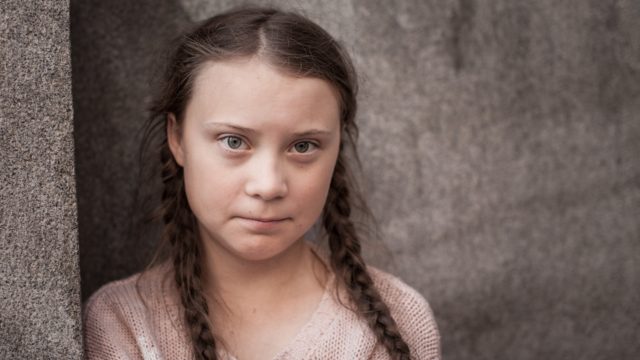Who is leading the global race for a green economy post-COVID?
New Green Economy Tracker data reveals the leaders, the laggards, and what comes next.

We’ve heard the phrase ‘build back better’ from political and corporate platforms all over the world. And there’s no shortage of evidence to show the surge from citizens everywhere demanding that a better, fairer, greener economy emerge from the ashes of COVID-19. So, nearly two years on from the beginning of the pandemic, where is the world at?
The latest data from the GEC’s Green Economy Tracker is striking in this regard. The analysis goes beyond monitoring the sprinkling of green stimulus, to instead delve further into whether governments are taking on the more ambitious changes to our economies in order to safeguard nature and investing in a just transition. Here are a brief top five highlights from what we found:
The global green recovery is patchy and piecemeal.
The vast majority of countries are missing the opportunity of a generation to emerge from the ashes of COVID and restart their economies on a green (and fair) trajectory.
Our research - drawn from in-country experts and updated by our global, grassroots network - puts Sweden, France and Spain at the vanguard of an inclusive, green COVID recovery. Not only are these countries investing many billions of Euros in crosscutting recovery packages (with at least 37% of EU derived funds on climate-related initiatives), but they are explicitly focusing on structural green issues - such as applying environmental conditions to carbon-heavy industry bailouts and creating green jobs and skills programmes for the long-term unemployed.
By contrast, Japan and especially Australia are lagging way behind their high-income peers on green recovery. The Australian government is still enmeshed with climate-sceptic politics and a terminally brown economic model, while Japan is only just starting to turn warm words into policy that can move an embattled energy sector beyond the crutch of coal. Germany and South Korea, often cited as the early leaders in the green economy (with the ‘Energiewende’, and 2009 Green New Deal, respectively) are now falling behind the pack. While both countries have outlined plans and considerable green stimulus funding, Germany has failed to match the breadth of the new leaders’ agendas with its narrow focus on low carbon and green mobility, and South Korea has set a wide agenda with nature and green jobs at the centre, but is behind on decarbonising energy and (so far) relatively little policy or funding detail to make implementation feel deliverable.Poorer countries are struggling to even begin to green their recoveries.
Faced with a credit crunch, recession and debt, middle and lower income countries urgently need financial support to avoid being locked into (nature and carbon intensive) brown economic pathways. A missed national and global opportunity to hit essential 1.5 degree climate targets and arrest the decline in biodiversity and natural capital our economies are built on.
For example, Costa Rica has had to redirect more than US$370 million in structural funds for their 2019 National Decarbonisation Plan towards immediate pandemic response measures and reducing public debt. Ethiopia‘s world leading green economy ambition and planning is being completely undercut by political turbulence and lack of recovery funds. Uganda, meanwhile, has a robust national green economic plan in place but their recovery plans can only stretch to a small number of solar powered schemes as they face issues of extreme poverty and significant debt.
But there are some unexpected green shoots emerging. Nigeria, a traditionally and persistently fossil-fuel based economy, has begun phasing out fossil fuel subsidies and directed around 15% of its COVID-19 economic support package toward green measures focusing on renewables, green jobs and a just transition.The countries already on the road towards a green economy pre-COVID have been more agile and ambitious in grabbing the opportunities of a green recovery than their counterparts.
Paper plans do not a green transition make, but they can put governments in a good position to act when a moment arrives. For example, France‘s Ministry for Ecological Transition was well placed to take up the green recovery agenda swiftly and integrate green priorities across different policies. Sweden has long held a robust national green economy plan which led to its pioneering of the world’s first and most comprehensive carbon tax; has subsidised electric vehicles since 2006; and hit its 2020 target of 50% renewable electricity eight years early.
Despite more mixed outcomes so far, South Korea’s Green Deal heritage and Italy’s fresh Ministero della Transizione Ecologica have assisted in coordinating green recovery efforts, and across the board countries with stronger policy ambition in the trackers 5 themes and 20 policies have also had a step up in greening their COVID-19 stimulus and recovery plans. It is those countries with average or weak planning that have largely been unable to even begin greening recovery plans.Just transition thinking remains marginal to the green recovery compared with more conventional approaches - such as large scale investment in renewable energy.
The knotted problem of how to make the transition to a green economy model fair for everyone, and especially workers in sunset fossil fuel industries, is only beginning to be addressed by governments. But it is a pressing present concern of those leading the green economy transition and a future concern for all economies.
Green energy investment is ubiquitous across green recovery packages - even those with weak packages - but a commensurate policy response on creating decent, green jobs and what to do for those with ‘brown jobs’ is reserved for relatively few packages. Spain has begun this integration of just transition planning with specific support for marginalised communities in their package, and committing to produce just transition plans for regional communities and prioritising green investments for municipalities with fewer than 5,000 inhabitants.
South Korea has allocated funds specifically to support remote communities across 34 island regions to replace diesel generation systems and infrastructure with renewable energy, and aims to create 600,000 green jobs by 2025, and train 20,000 individuals in the fields of climate change and green engineering through their Green New Deal package. Nigeria meanwhile has notably set aside 60% of its small business survival fund specifically for women entrepreneurs as part of its recovery package.A nature-positive recovery is still rhetoric rather than reality.
Despite much progress in greening economic policy and linking the climate and nature agendas through nature-based-solutions, investment in nature is still far weaker than in climate, low-carbon and net-zero. And these agendas have only just found their policy-feet and institutional buy-in.
There is enormous potential in a nature-based green economy that goes beyond tree planting monoculture and is built on restoring and maintaining natural capital as a key asset for national governments, and the global public good of healthy critical natural capital as the foundation of all economic activity. Ultimately, the Tracker policies on comprehensive wealth accounting show the future of integrated economic governance of nature - where governments are concerned less with short term growth and instead in policies that sustain and increase the stock of overall wealth, including economic, social, and environmental assets together.
We also are starting to see local and indigenous communities engaged in new models of ecosystem management in some of the best recovery packages, such as Costa Rica’s ‘Women & Nature’ initiative which provides financial support and access to credit for rural women who safeguard natural capital, or Portugal’s $800 million fund allocated to forest management, cultivation and fire protection to provide greater climate mitigation and resilience for rural forest communities.
So what next? Let us be clear, the pain and disruption caused by COVID-19 is far from over, and the recovery has only just begun.
Politicians and corporate leaders have the opportunity of their lifetimes to make deep-rooted changes to our economies.
First, the Green Economy Coalition urges multilateral agencies and government donors to redouble financial support to low income and debt-stressed countries, prioritising those that are doing credible green recovery planning.
Second, we stress that all countries put investment in biodiversity and natural capital into their recovery plans by targeting at least 30% of spending on nature-positive investment going forward.
And finally, the window for a structural green recovery is open, and all nations should present transformative green investment packages at COP26 to ensure the credibility of their revised nationally determined contributions (NDCs).
The Green Economy Tracker offers an integrated policy roadmap on how to do so, wherever you start from. We’re all on the journey together.
----
Photo by Martin Sanchez on Unsplash
